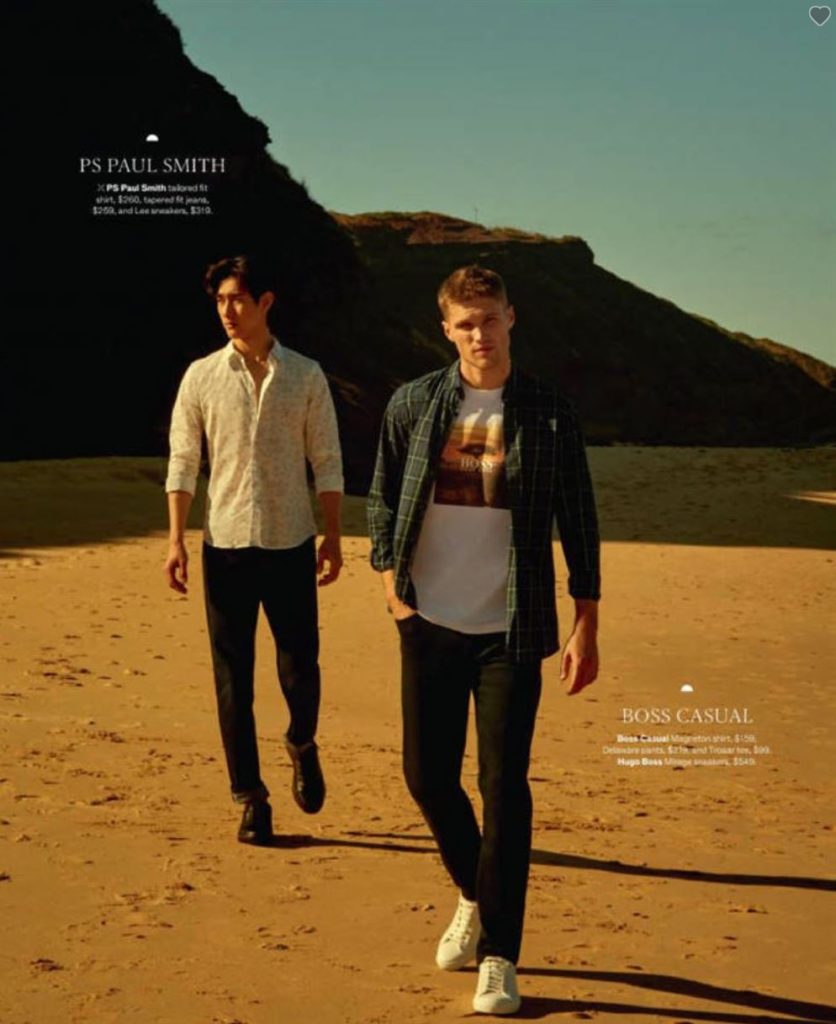HUGO BOSS is known the world over for its imitable style, but the brand has not always been synonymous with high-end menswear. With humble beginnings as a producer of uniforms and workwear with only 20 employees, HUGO BOSS grew to become one of the biggest names in the industry.
Here’s a more detailed look into how the brand’s early days shaped its growth into the menswear powerhouse we know today.
HUGO BOSS Founding and Early Days
Hugo Ferdinand Boss founded the eponymous fashion brand. He was born in 1885 in Metzingan, Germany, the youngest of five siblings. As the only male child to survive infancy, Hugo was chosen by his parents as heir to inherit the family business – a lingerie and linen shop.
Hugo Boss started his career as a merchant apprentice before enlisting in the army during World War I.
In 1924, he opened his clothing factory, employing 20-30 seamstresses and hand-producing garments, including shirts and traditional southern German loden jackets.
The effects of the 1920s global economic crisis on the textile industry caused Boss to consider filing for bankruptcy in 1932. However, he came to an agreement with the factory’s creditors and was able to continue production.
During the 1930s, the production at HUGO BOSS was focused mainly on uniforms and workwear. The company received major commissions for army uniforms, which it continued to produce for the German armed forces and the Waffen-SS during World War II.
Hugo Boss died in 1948, and his son-in-law Eugen Holy took over the business.
1950s - 1960s – First Men’s Suit
After the death of Hugo Boss, the factory continued workwear production, making mainly uniforms for postal and police workers.
The company received its first orders for men’s suits during the 1950s, and as demand grew, HUGO BOSS produced its first men’s off-the-peg suits in 1960.
In 1969, Jochen and Uwe Holy – Eugen’s sons – took over the business.
1970s - 1980s – International Men’s Lifestyle Brand
The HUGO BOSS company launched its BOSS brand in 1970 and soon became known for its high-quality men’s collections.
During the early 1970s, the company also started sponsoring motorsports events, which helped the brand reach a global audience.
The sporting sponsorships continued through the 1980s, with former world number one Bernhard Langer becoming the first professional golfer to wear the BOSS label on the fairways.
During the 1980s, HUGO BOSS also launched its first fragrance line. Fragrances would go on to become one of the brand’s most popular products.
In 1989, HUGO BOSS granted an eyewear license and started producing regular eyewear collections, including sunglasses.
1990s – Expanding Product Range and Womenswear Debut
During the 1990s, the HUGO BOSS company continued to expand and evolve, starting with their tri-brand strategy in 1993. At this time, the company added two new brands – HUGO and BALDESSARINI – to the original BOSS label. In the late 90s, a casual sports and leisurewear label – ORANGE – and a golfwear collection were added to the HUGO BOSS lineup.
The new brands expanded the target market for HUGO BOSS, as the company also started to add new product lines to its range.
The first shoe collection was launched in 1995, and a watch collection was released the following year.
1998 was a big year for the company with the launch of their first womenswear collection under the HUGO label.

2000 - 2010 – Fashion Week Debut, Advances in Tailoring and Transition to Digital
During the early 2000s, the company continued to expand its womenswear lines alongside constantly adding new collections to their ever-popular menswear brands.
HUGO BOSS also continued to cement their brand within sporting worlds with a rebrand of their golf collection to BOSS Green and a sailing sponsorship.
The group showed its first collection for BOSS Spring/Summer 2007 in New York.
2008 was a pivotal year for HUGO BOSS with the opening of their online store in the UK. Other online stores serving different countries around the globe were soon to follow. A dedicated HUGO BOSS app for iOS was launched in 2009.
During this decade, the BOSS Selection Tailored Line introduced full canvas construction with every step in creating a suit being performed by hand.
2011 - 2020 – Made to Measure Suits and Brand Simplification
In 2011, HUGO BOSS launched its Made to Measure service, offering a selection of fine Italian fabrics to create a completely custom suit, along with shirts and ties.
Simplifying its brand strategy, the company merged most of its brand labels into the BOSS label, with only HUGO operating as a separate brand since 2018.
Despite the business difficulties brought about by the 2020 pandemic, the HUGO BOSS company continues to go from strength to strength. While many stores across the world remain closed, the classic styling of the BOSS label and the innovative collections of the HUGO label coupled with strong momentum in online shopping have allowed sales to soar.
Whether you’re refreshing your workwear wardrobe, stocking up on casual wear, or choosing a suit for a special occasion, HUGO BOSS is a great choice and is certainly not expected to go out of style any time soon.